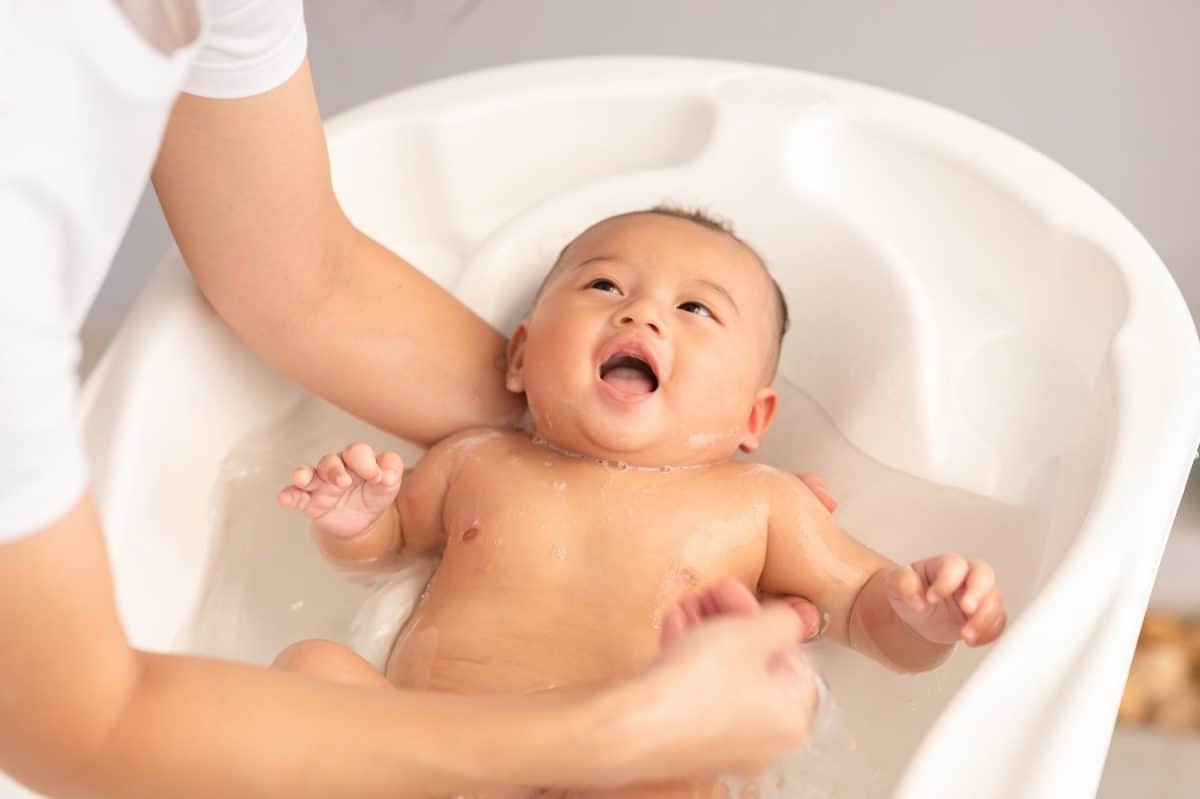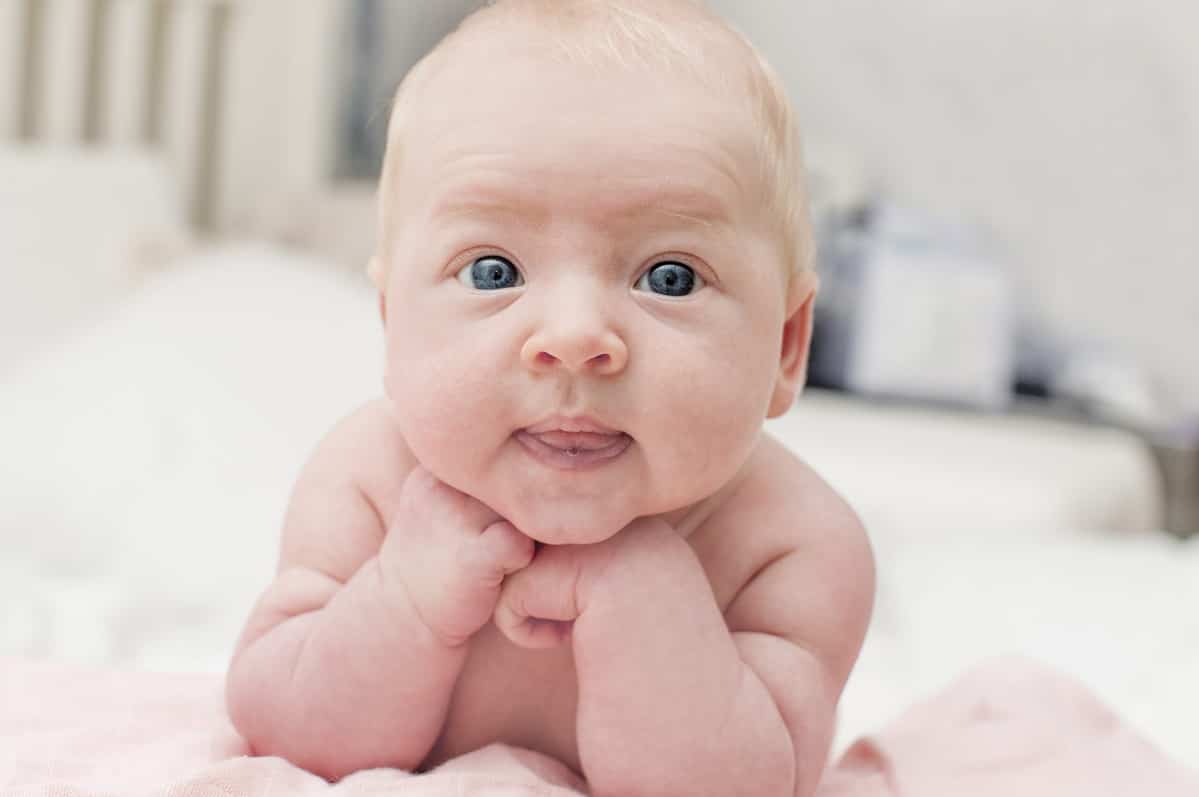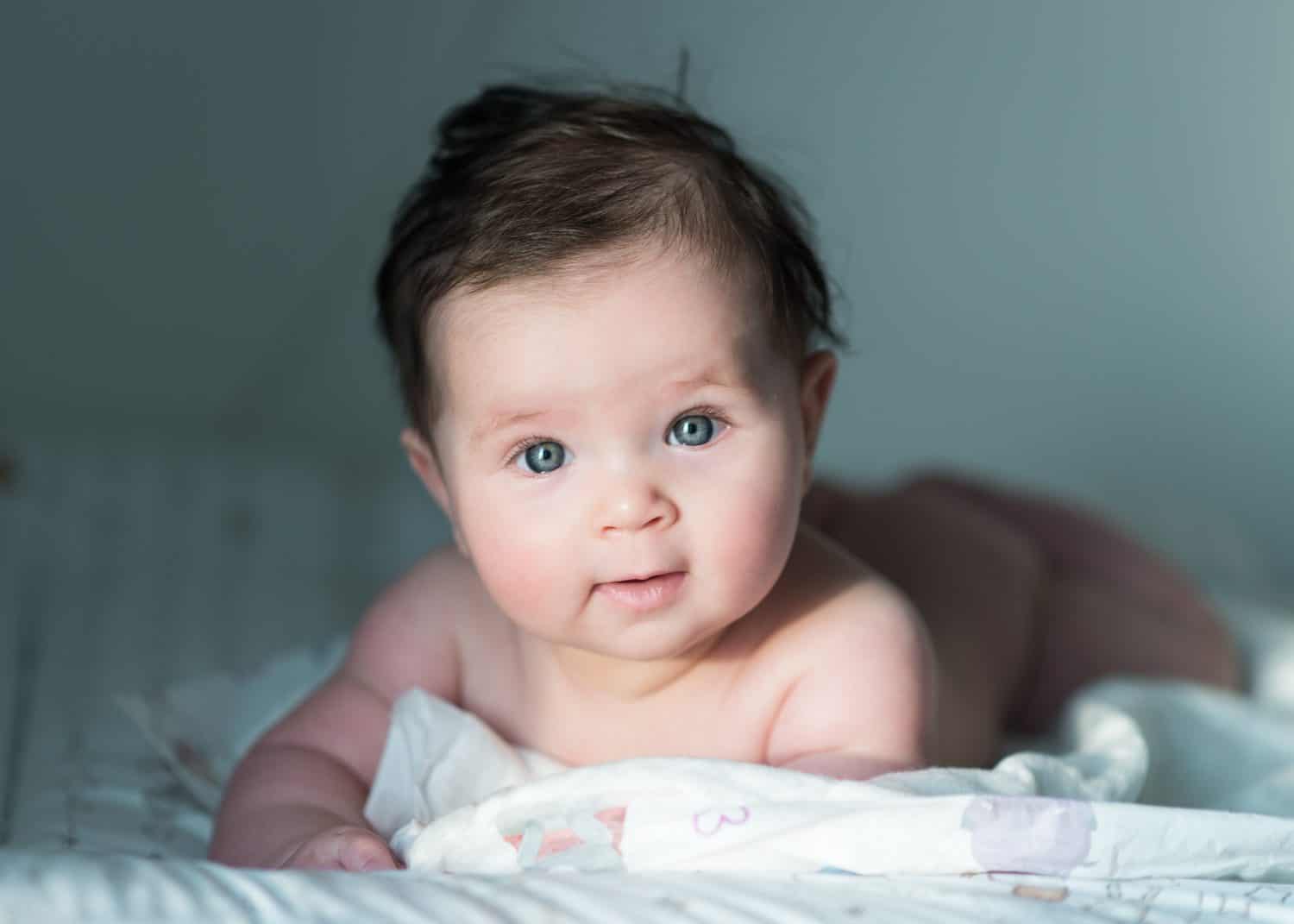If you’re a first-time parent, there’s probably a lot you don’t know about raising little ones. Some of the things you need to know about babies come with experience, while others you might learn from a baby care class, your pediatrician, or a family member. Even if you’ve already had a baby, there are many things about babies most parents don’t know.
From the fact that newborn babies don’t produce tears to the surprising number of bones in their bodies when they’re born, there are many interesting facts about babies. Here are 10 things about babies that most parents don’t know.
Their Hair Falls Out

©paulaphoto/Shutterstock.com
Babies start to grow hair on their heads even while they’re still in the womb. Some newborns are born mostly bald while others are born with a full head of hair. No matter what type of hair or how much hair your baby is born with, many parents don’t realize that their newborn’s hair will likely fall out.
During the first 6 months of life, hair loss is incredibly common in newborns. Most of the time, this loss happens gradually, so you won’t necessarily notice large patches of their hair falling out. Even if they don’t lose their whole head of hair, the color and texture of their hair may change drastically after the first 6 months.
Newborns Don’t Have Tears

©FamVeld/Shutterstock.com
Newborns tend to cry a lot since it’s their main way of communicating. However, you might not know that newborns cry without tears. Even though newborn babies do cry quite often, they don’t produce tears until they’re a little bit older.
At this age, babies don’t make enough tears for them to be visible when they’re crying. They start to produce some after a couple of weeks, but you likely won’t see full-on waterworks until they’re a few months old.
Baths Will Have to Wait

©220 Selfmade studio/Shutterstock.com
There are few things sweeter than giving your newborn baby their first bath. However, the current recommendation is that you don’t actually bathe your newborn right away. According to the World Health Organization, parents should wait at least 24 hours after their baby is born before bathing them.
Even after 24 hours, you should only give your baby a sponge bath while their umbilical cord stump is still attached. Once their stump falls off, you can give them a proper bath in a newborn tub.
You Don’t Have to Be Scared of Their Soft Spots

©marialevkina/Shutterstock.com
Most parents know that their baby is born with soft spots on their head, also known as fontanels. One soft spot is on the top of their head and the other is on the back of their head. These soft spots are present in places where the bones of their skull haven’t fused yet.
Considering the bones of your baby’s skull haven’t fused yet in the place where their soft spot is, it’s important to be careful with the area and not put pressure on it intentionally. Even though you should be careful, you don’t have to be scared of their soft spots. It’s okay to gently brush their hair or wash the area where a soft spot is.
Different Cries Have Different Meanings

©Rachaphak/Shutterstock.com
Any parent who has had a newborn knows that they cry to communicate. Considering they can’t talk or make any other gestures at this age, crying is their only real way of trying to tell you they need something.
What some parents don’t realize is that different newborn cries may mean different things. Newborn cries are usually divided into three or four categories. Although there are differing opinions on the types of cries, most research has shown that there are separate cries for things like pain and hunger.
Babies Cry the Most Between 5 and 6 Weeks Old

©morrowlight/Shutterstock.com
In the early newborn days, it can sometimes feel like your baby cries all the time. This is especially true if your baby is dealing with colic and cries for a long period each day.
As you’re getting used to being a new parent and listening to your baby’s cries, it might seem like they cry the most in those early days. However, research shows that typically, newborn crying peaks around 5-6 weeks of age.
Their Eyes May Change Color

©Tatiana Katsai/Shutterstock.com
One of the many questions parents love to know the answer to is what color their baby’s eyes will be. You might not know that the color of their eyes at birth isn’t an accurate indication of what color their eyes will be later on.
Most babies’ eyes change color after they’re born, and although it can take up to a year for the change in their eyes to become permanent, the color won’t change as much after the first 6 months of life.
Babies Have a Lot of Bones

©NDAB Creativity/Shutterstock.com
Another interesting fact about babies is that newborn babies have more bones than adults do. While adults have 206 bones, newborns are often born with 300 bones. One of the reasons for this is that babies in the womb need to be more flexible than adults.
It’s also true that babies need flexibility to make their way out of the birth canal as well. Having more bones that are not fused together allows for more flexibility for your newborn baby. These bones fuse as they get older to create longer adult bones.
Most Newborns Have a Birthmark

©aviahuisman/Shutterstock.com
If your baby is born with some kind of birthmark, there’s no reason to panic. This is incredibly common and many newborns are born with at least one birthmark. There are many different kinds of birthmarks, such as stork bites, which are commonly found on the back of a newborn’s neck, forehead, or top of their head.
In most cases, birthmarks are harmless. In many cases, these newborn birthmarks disappear after a while and aren’t permanent. The two main types of birthmarks are pigmented and vascular marks.
Your Baby’s Brain Doubles in Size in the First Year

©Anna Chinaroglu/Shutterstock.com
From the time your baby is conceived, every part of their body is developing at an incredible rate. This rapid development doesn’t stop once they’re born. When it comes to your baby’s brain, at birth, it’s about one-quarter of the size of a fully developed adult brain.
What’s amazing about a baby’s brain development after birth is that their brain doubles in size during the first year of their life. Additionally, over 1 million new neural connections are formed every second at the beginning of their life.
The image featured at the top of this post is ©veryulissa/Shutterstock.com.
